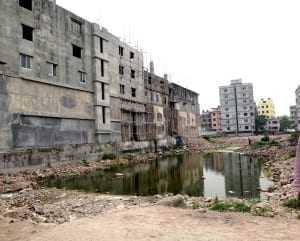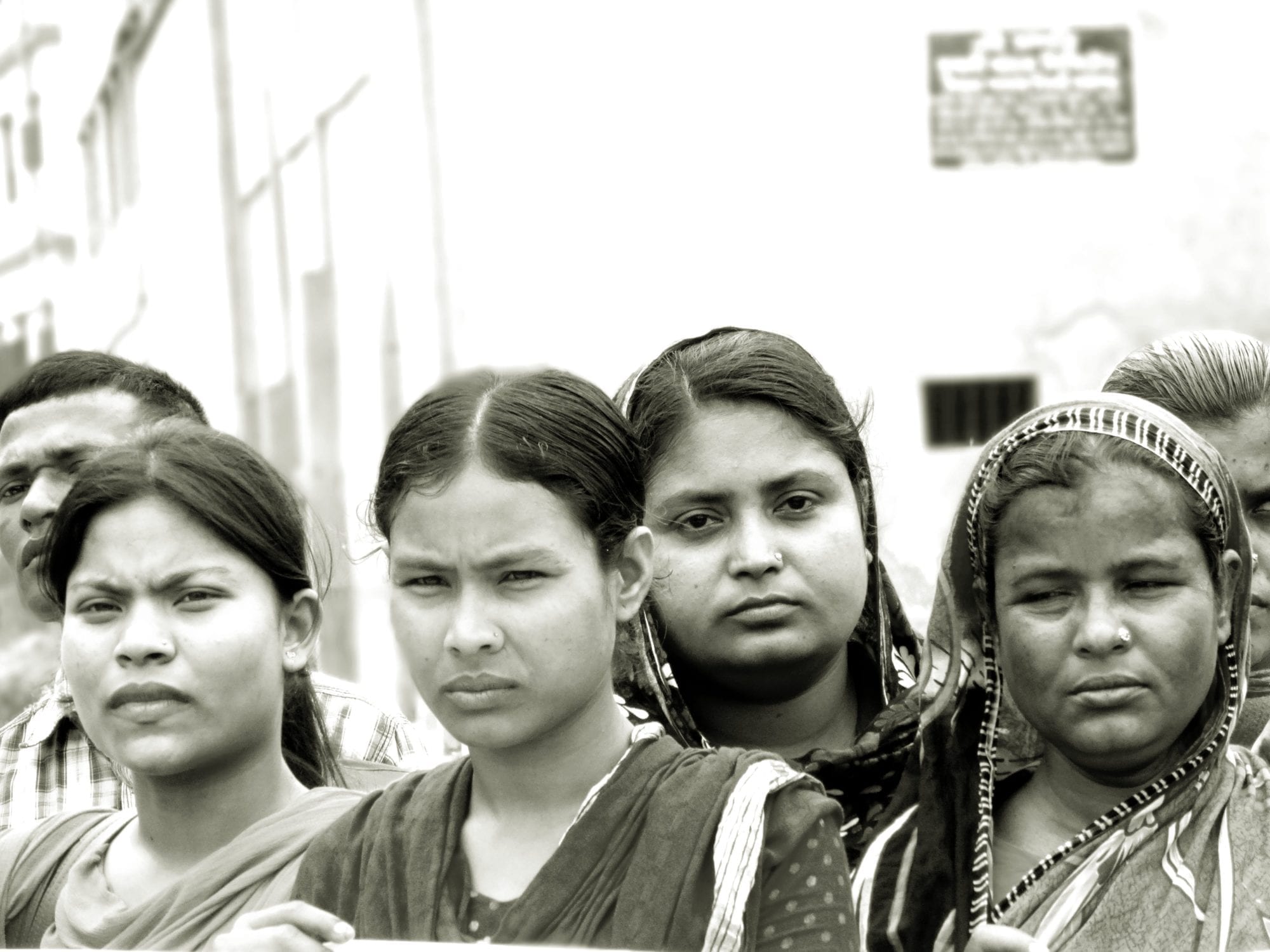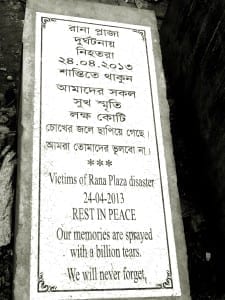In the initial months after the Rana Plaza collapse on April 24, 2013, a preventable catastrophe that killed more than 1,130 Bangladesh garment workers and injured thousands more, global outrage spurred much-needed changes.

The site of the Rana Plaza building two years after it collapsed. Credit: Solidarity Center/Balmi Chisim
Dozens of garment factories were closed for safety violations through the Bangladesh Fire and Building Safety Accord process, a legally binding agreement in which nearly 200 corporate clothing brands pay for garment factory inspections. Other inspected factories where problems were identified have addressed pressing safety issues. Workers organized and formed unions to address safety problems and low wages—and the government accepted union registrations with increasing frequency—after the United States suspended its Generalized System of Preferences (GSP) agreement with Bangladesh based upon chronic and severe labor rights violations.
But in recent months, those freedoms are increasingly rare, say garment workers and union leaders.
“After the Rana Plaza and Tazreen disasters, it had become easier to form unions,” says Aleya Akter, president of the Bangladesh Garment and Industrial Workers Federation (BGIWF). But since November 2014, the government is more frequently rejecting registrations, she said, speaking through a translator while at the Solidarity Center in Washington, D.C., this week. The Tazreen Fashions factory fire five months before the Rana Plaza collapse killed 112 garment workers. (Download a fact sheet here.)
Overall government rejections of unions that applied for registration increased from 19 percent in 2013 to 56 percent so far in 2015, according to data compiled by Solidarity Center staff in Dhaka, the Bangladesh capital. Despite garment workers’ desire to join a union, they increasingly face barriers to do so, including employer intimidation, threatened or actual physical violence, loss of jobs and government-imposed barriers to registration. Regulators also seem unwilling to penalize employers for unfair labor practices.
“In our view, a severe climate of anti-union violence and impunity prevails in Bangladesh’s garment industry,” according to a March International Trade Union Confederation (ITUC) report. “The violence is frequently directed by factory management. The government of Bangladesh has made no serious effort to bring anyone involved to account for these crimes.”
Meanwhile, thousands of workers still toil in unsafe factories. In the two years since the Tazreen fire, at least 31 workers have died in garment factory fire incidents in Bangladesh, and more than 900 people have been injured (excluding Rana Plaza), according to Solidarity Center data. The Accord and the non-legally binding Alliance for Bangladesh Worker Safety have nearly completed their inspections, which will total fewer than half of the country’s 5,000 garment factories, including 600 factories that have refused entry to inspectors, according to the International Labor Organization.
In recent months, the Solidarity Center has conducted a series of fire safety trainings for garment workers near Dhaka and Chittagong, where most garment factories are located. The 10-day trainings provide workers with hands-on fire and building safety experience.
Following one recent training, Lima, a factory-level union leader, says she “learned a lot.
“We organized our union in mid–2014. The staircase that workers use in my factory used to be blocked and was a fire hazard. But through our union we took the initiative to talk to management about the problem and now the staircase is clear.”
When garment workers like Lima are allowed to form unions, they have the opportunity to create positive changes at their workplaces, making unions fundamental to substantive improvements in Bangladesh garment factories—an opportunity fewer and fewer garment workers can grasp in the current environment.


